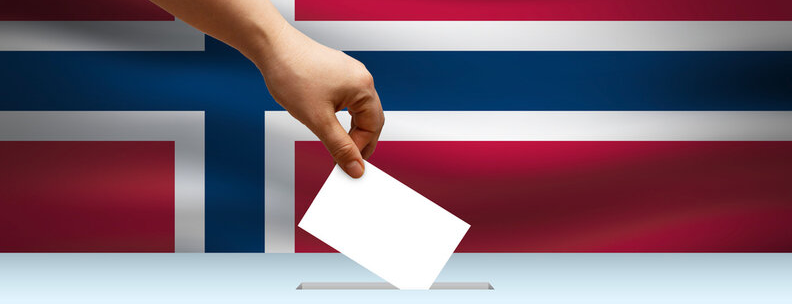On Monday, September 8, Norwegians once again took to the polls in a display of democratic regularity that is almost unique in the world.
The Labour Party maintained its position as the largest party in the Storting, though with a slightly reduced share of the vote. The Conservative Party made modest gains, while the Green Party and Red Party also saw an increase in support. As is often the case in Norway, no single party holds a majority, and coalition talks are already underway to shape the next government.
But this article is not about the results — it's about the process. On the occasion of the International Day of Democracy, we highlight the Norwegian election experience, as elections remain one of the most essential ways of exercising democratic rights.
A Clockwork System
In Norway, parliamentary elections are held like clockwork every four years, always on the second Monday in September. This unshakable rhythm has been broken only once in modern history — during the Nazi occupation in World War II. The exact date is confirmed by the sitting government, but the schedule itself is sacred, no matter who is in power.
In some municipalities, the democratic buzz starts a day early: local councils may open polling stations on the Sunday before, giving eager voters a head start in shaping their nation’s future.
But the rhythm begins even earlier. For weeks before election day, Norwegians at home and abroad quietly begin shaping the outcome. At Norwegian embassies, a small booth is set up. A few citizens walk in, show their ID, and mark their choice — sending their voice across borders, to be counted with the rest.
Trust in the Process
The rules are precise, yet designed for fairness. Elections to the Storting, Norway’s parliament, follow a proportional representation system using the modified Sainte-Laguë method. It slightly tilts toward larger parties but still gives smaller ones a real seat at the table.
The result? A parliament that mirrors the diversity of political opinion across the country.
Norway is split into 19 constituencies, matching its counties. Each sends multiple representatives to the Storting. The formula — a balance of population and geography — ensures that the sweeping, sparsely populated north isn’t drowned out by the urban south.
Then there are the leveling seats — 19 of them — sprinkled across the country after the main count. Think of them as a way of evening the scales. If constituency results lean too heavily in favor of some parties, these extra seats restore proportionality. But there’s a catch: a party must cross the 4% national threshold to be eligible.
Voters choose party lists, not individual candidates. While they can promote someone up the list, such changes rarely impact the final result unless a large group acts together. The system is built more on shared outcomes than on individual personalities.
High Turnout, Low Drama
The trust in the system is remarkable. Voter turnout typically hovers between 75% and 80%, a figure that would make many democracies envious. The process is calm, clean, and widely respected. There’s little corruption, and political compromise is not seen as a sign of weakness — it’s part of how the system works.
Because of the proportional system, single-party majorities are rare. Coalitions are the norm. Minority governments often must negotiate legislation, and in Norway, that’s business as usual.

Representation for All
Local elections follow the same principles, with an added layer of inclusiveness: residents living in the community for longer than 3 years can vote in municipal and county elections, even if they’re not Norwegian citizens. It’s a quiet statement that local governance belongs to everyone who lives there.
There’s also the Sámi Parliament, which gives Norway’s Indigenous population a formal voice in national affairs. Sámi registered in a special electoral roll can vote for their representatives to this consultative body, which works to preserve and promote Sámi culture and rights.
Evolving Traditions
Despite Norway’s digital sophistication, the country still votes using paper ballots and manual counting. Computers manage logistics and registration, but the act of counting is done by hand — watched, verified, and trusted. You can vote in advance, by mail, or at a diplomatic mission abroad. But the secrecy of the ballot — and the moment of physically dropping it in a box — is preserved.
Some traditions do evolve. Until recently, voters could strike out or promote individual candidates on parliamentary ballots. That changed in May 2024, when a reform removed that option for national elections. The party list now stands as presented. However, local elections still allow voters to influence candidate ranking — a reflection of the personal ties many feel at the community level.
No System is perfect
While national election turnout remains relatively high (~75–80%), local and regional elections have seen declining turnout. Youth and immigrants, in particular, tend to be less engaged in politics and voting.
Despite strong regulations, Norway’s election infrastructure and public opinion remain vulnerable to disinformation campaigns, foreign influence, and cyber threats — as in many other democracies.
In the end, Norway’s election story is one of precision, participation, and trust — a democratic ritual that, like the seasons, comes right on time - every four years on the second Monday in September
